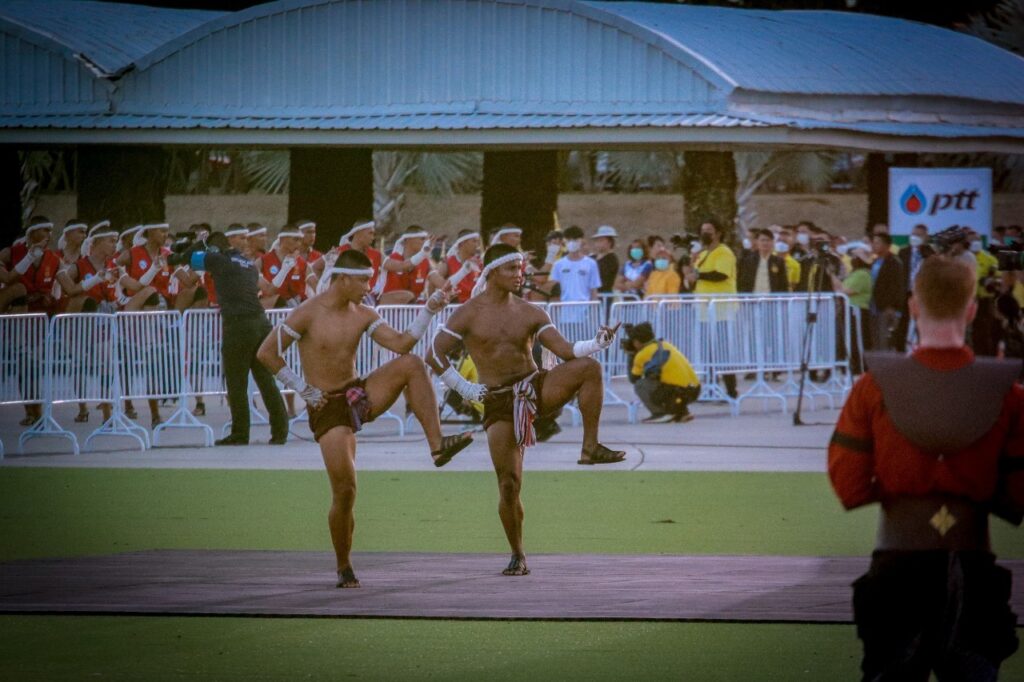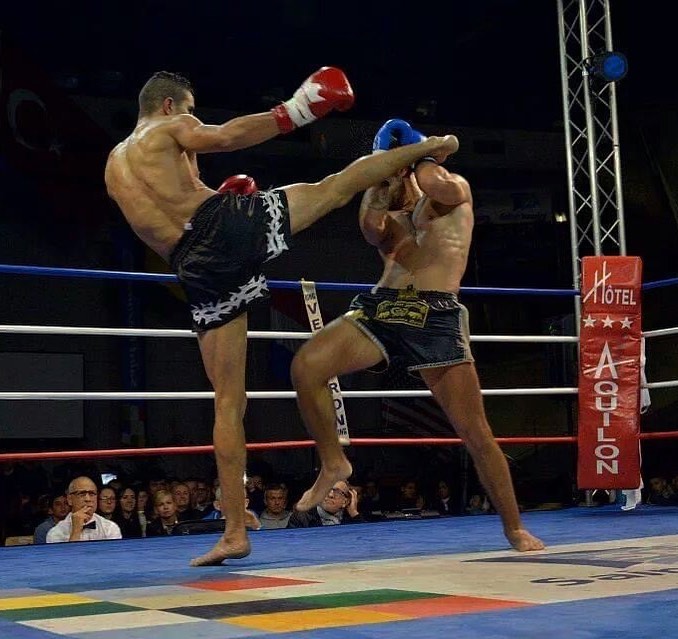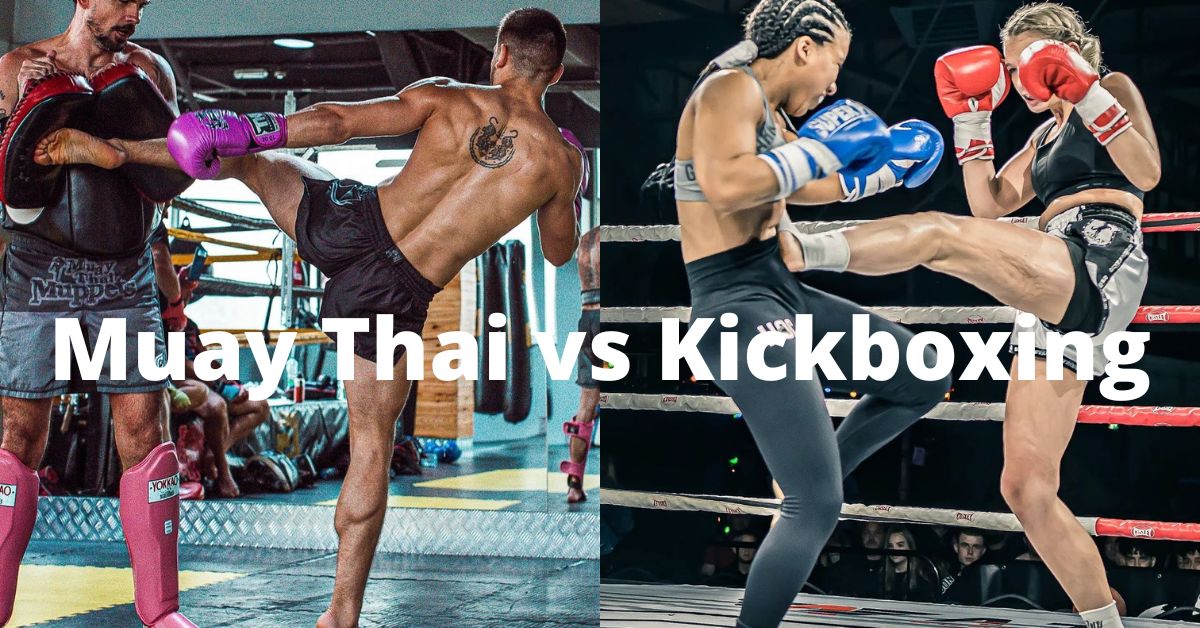Muay Thai vs Kickboxing
Many often lump in Muay Thai and kickboxing as the same thing, but this would be an incorrect assertion. They may seem similar, but they are two very different sports from one another.
Here is what you need to know about Muay Thai vs Kickboxing. Going through all of the differences and similarities that the two striking arts share.
Which type of kickboxing?
Kickboxing is sort of a blanket term as there are various types of kickboxing. Some of the most known types of kickboxing aside from Muay Thai are:
- American Kickboxing
- Dutch Kickboxing
- Savate Kickboxing
For this article, we’ll cover the type of kickboxing that is done under Glory and K-1 rules, which encompasses these styles.
The development of Muay Thai vs Kickboxing
Muay vs other styles of kickboxing may seem similar, but were developed in vastly different ways. Here is how these striking arts were developed.
The development of Muay Thai
You probably already know how the art of Muay Thai was developed, but let’s go ahead and give a quick breakdown. The organized sport of Muay Thai is less than a hundred years old, but the techniques used are thousands of years old.
They were originally used within the art of Muay Boran which predates Muay Thai. This incredibly effective form of unarmed combat was used by the warriors of siam for thousands of years.
These warriors were considered some of the fiercest fighters of their time. During the 15th century, the king of Siam began holding ceremonial competitions between his best warriors.
At festivals thrown by the king, these warriors would perform the Wai Kru and have friendly exhibitions. These festivals have continued throughout the centuries and are still done in modern-day Thailand.
Modern Muay Thai started to become established in the early 20th century during WW1. In between battles, Thai officers would set up Muay Thai exhibitions to entertain their troops.
This was the first time that westerners had been exposed to the art of Muay Thai. Western boxers would even participate in exhibitions against the Thai soldiers.
While Thai troops were stationed in Europe, they were also exposed to the sport of western boxing. They were influenced by the rules of western boxing and used them to create what would become modern Muay Thai.
Thai boxing bouts would be held in boxing rings, with boxing gloves, rounds, weight classes, and a governing body. As time went on, Muay Thai has become one of the most popular striking martial arts in the world.

The development of other forms of kickboxing
While Muay Thai is the most known kickboxing art, there are other styles of kickboxing that were also developed. Here is a quick breakdown of how American kickboxing, Dutch kickboxing, and savate kickboxing were formed.
American Kickboxing
American kickboxing was developed during the 1960s. This style of kickboxing was developed off of techniques from Karate, boxing, Taekwondo, and also some Kung Fu.
Later on it would also implement facets of Muay Thai within the martial art. American kickboxing differentiated itself from Muay Thai with more of a focus on boxing combos and kicks above the waist.
The first American Kickboxing World championship was held in 1974 and organized by the Professional Karate Association (PKA). Some notable fighters that have held American kickboxing titles include: Duke Roufus. Javier Vasquez, Pat Barry, Raymond Daniels, and Stephen “Wonderboy” Thompson.
Dutch Kickboxing
Dutch kickboxing was a form of kickboxing created in Holland during the late 1970s. Just like with American kickboxing, Dutch kickboxing was based heavily on Karate and boxing techniques.
But it also took inspiration from Muay Thai and emphasized the use of leg kicks to go along with their boxing. Dutch kickboxers like Ramon Dekkers would routinely fight in Thailand and helped put Dutch kickboxing on the map.
Promotions like K-1 and later Glory would showcase some of the best Dutch Kickboxers in the world. This exposure showed the world the effectiveness of the Dutch style of kickboxing.

The similarities between Muay Thai vs Kickboxing
Both Muay Thai and kickboxing share many of the same similarities between one another. Here are some of the most common similarities that each have.
Similar techniques
The main similarity that Muay Thai and kickboxing share is that they share some of the same techniques. Many of the same punching, kicking, and knee strike techniques are taught within both disciplines. This leads to the confusion of some thinking that Muay Thai and kickboxing are the same thing.
Same time limits
Another of the main similarities that these two striking disciplines share is the same time limit per round. Both striking styles took the sport of boxing’s time limit of 3 minutes per round. Both also have 5 rounds for championship rounds.
Same Fighting Areas
The majority of all Muay Thai and kickboxing matches are held within boxing rings. They have different rule sets for their bouts, but nearly all are held within boxing rings.
Fighters often compete in both
It is quite common for both kickboxers and Muay Thai fighters to transition to each sport. Generally, more Thai fighters compete in both styles, but many kickboxers have ventured into Muay Thai.
The differences between Muay Thai vs Kickboxing
While Muay Thai and kickboxing may seem very similar, they do have some glaring differences. Here are the most common differences between Muay Thai and kickboxing.
Only elbows are allowed in Muay Thai
The biggest difference between Muay Thai and kickboxing is that only elbows are allowed in Muay Thai. K-1 never allowed elbows and Glory do not allow elbows within their matches.
No clinching in kickboxing
Clinching is only allowed and practiced within the art of Muay Thai. Kickboxing follows similar rules to boxing, where the referee will immediately break up clenches and tie ups.
Different knee strike rules
The rules for knee striking are also vastly different between Muay Thai and kickboxing. In Muay Thai, you are allowed to clinch an opponent and pull their head down as you throw a knee strike.
In kickboxing, you are not allowed to pull an opponent’s head down and deliver a knee strike. You can only land knees without pulling your opponent into your knee.
Boxing is more emphasized in kickboxing
While Muay Thai does include boxing combos, boxing has been historically far more emphasized in kickboxing. The heavy influence of boxing in kickboxing actually influenced Thai boxers to focus more on their boxing skills. Mostly due to the influx of Dutch kickboxers that fought in Thailand in the 1980s and won with better boxing skills.
Sweeps are more emphasized in Muay Thai
Sweeps and trips are far more emphasized in boxing than in kickboxing. This is mostly because clinching isn’t allowed in kickboxing, so sweeps and trips aren’t scored.
Is it normal to train/compete in both Muay Thai and kickboxing?
It is very normal for fighters from both disciplines to train and even compete in both Muay Thai and kickboxing. Since there are many similarities to the training and conditioning of both styles, fighters from each often compete in both.
Fighters like Buakaw, Saenchai, Ernesto Hoost, and Giorgio Petrosyan are just a few that have won in both disciplines.
Muay Thai vs Kickboxing: Which is better?
Honesty, this is a matter of preference to which someone would like more. Both Muay Thai and kickboxing are incredibly effective striking styles that have some phenomenally talented fighters.
To say who would win a fight between a Muay Thai fighter and a kickboxer would depend on the rule set. Under Muay Thai rules, a Thai boxer would have a clear advantage in being able to clench and throw elbows.
But under kickboxing rules, a Muay Thai fighter could throw elbows, reinforced knees, or clinch. Giving a huge advantage to the kickboxer.
What are the two top Muay Thai and kickboxing promotions?
There are currently two promotions that are the most prominent Muay Thai and kickboxing promotions. Those are Glory and ONE Championship.
Glory took the helm as the world’s top kickboxing promotion after K-1 Kickboxing ceased operations in 2013. For the last decade, Glory has been one of the only top kickboxing promotions that are still running.
The Singapore based ONE Championship was founded in 2011 and was originally an MMA promotion. ONE later started promoting Muay Thai events, which became incredibly popular.
Due to their popularity, they were able to sign some of the best Thai fighters in the world. Now many of the best Muay Thai fighters in the world want to fight in One Championship.
Has Muay Thai and kickboxing both influenced the other?
Yes, Muay Thai and kickboxing have been heavily influenced by one another. Muay Thai influenced kickboxing to include leg kicks, while kickboxing helped Thai fighters improve their boxing. This exchange of techniques and ideas has helped both striking disciplines improve and evolve.


